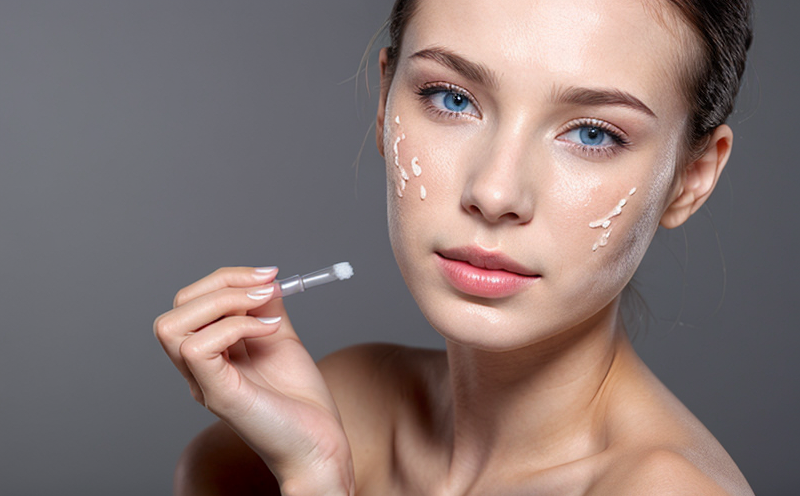Irritation Testing of Cosmetic Wipes and Towelettes
Understanding and ensuring the safety of cosmetic wipes and towelettes is paramount in the cosmetics industry. These products are designed not only for convenience but also for direct application on delicate skin, making it critical that they do not cause irritation or sensitization. Irritation testing plays a crucial role in guaranteeing the safety profile of such products.
The testing process involves subjecting samples to controlled conditions aimed at identifying any potential adverse reactions. This can include patch tests, in vitro methods using human-like skin models (such as EpiDerm), and animal-free alternatives like the Buehler method. The objective is to assess whether the product or its components may cause redness, swelling, itching, or other forms of irritation.
For cosmetic wipes and towelettes specifically, testing focuses on the wipe itself rather than the liquid contained within, as the wiping action can introduce additional variables that need to be considered. The test subjects are typically placed in contact with the wipe for a specified duration, after which they undergo evaluation based on predefined criteria.
The methods employed must adhere to international standards such as ISO 10993-10 and ASTM F834, ensuring consistency and reliability across different laboratories worldwide. Compliance is crucial not only for safety but also for market access in various regions that have stringent regulations regarding cosmetic products.
Testing of cosmetic wipes and towelettes involves rigorous specimen preparation, which includes the careful selection of samples and the creation of controlled conditions to mimic real-world use scenarios. This ensures that any observed effects are attributable to the product itself rather than external factors.
The instrumentation used in these tests is sophisticated and designed to provide accurate results. Microscopes, dermatometers, and other specialized equipment play a key role in assessing the skin's condition post-exposure. These tools help quantify changes such as erythema (redness), edema (swelling), and the presence of exfoliation or blistering.
The data collected from these tests is meticulously documented and analyzed to determine whether the product meets safety standards. Reports detailing the results are provided, offering insights into any potential irritants and areas for improvement. This information is invaluable for quality assurance teams and R&D departments looking to enhance product formulations.
By conducting thorough irritation testing, manufacturers can ensure their cosmetic wipes and towelettes meet regulatory requirements and consumer expectations. This commitment to safety not only protects the health of consumers but also enhances brand reputation and trust in the market.
Why It Matters
The importance of conducting thorough irritation testing on cosmetic wipes and towelettes cannot be overstated. Consumer safety is at the forefront of every manufacturer's priority, ensuring that products do not cause harm when used as intended. This is especially true for items that come into direct contact with sensitive skin.
- Regulatory Compliance: Many countries have strict regulations regarding cosmetics and their ingredients. Non-compliance can lead to product recalls, fines, and damage to brand reputation.
- Consumer Trust: Safe products instill confidence in consumers, leading to increased customer loyalty and sales. Unchecked irritants can result in negative reviews and a drop in market share.
- Risk Management: Early identification of potential issues through testing allows for corrective actions to be implemented before the product reaches the market.
In addition, companies that invest in robust safety protocols are better positioned to navigate changing regulatory landscapes. This proactive approach not only mitigates risks but also positions a brand as a leader in innovation and consumer protection.
Quality and Reliability Assurance
- Standardization: Adherence to international standards like ISO 10993-10 ensures consistent testing methods across different laboratories, enhancing the reliability of results. This standardization is crucial for ensuring that products meet global safety requirements.
- Controlled Conditions: The use of controlled conditions in testing, such as temperature and humidity control, mimics real-world scenarios to provide accurate assessments of product performance.
- Data Validation: Rigorous validation of test data ensures its accuracy and reliability. This process involves comparing results with known benchmarks and using multiple methods for cross-verification.
The quality assurance process also includes regular calibration of instruments, training of personnel, and implementation of stringent protocols to minimize human error. These measures contribute to the overall dependability of the testing outcomes, which is essential for maintaining a high standard in cosmetic product safety.
By adhering to these strict procedures, laboratories ensure that their findings are accurate and can be trusted by regulatory bodies and consumers alike. This commitment to quality not only protects public health but also fosters trust within the industry.
Competitive Advantage and Market Impact
Conducting comprehensive irritation testing offers cosmetic manufacturers a significant competitive edge in the market. In an industry where consumer confidence is paramount, a proven safety record can differentiate a brand from its competitors. This can lead to increased market share and enhanced brand reputation.
- Consumer Confidence: Products that undergo thorough testing are viewed more favorably by consumers who prioritize safety over price. This preference translates into higher sales figures and stronger brand loyalty.
- Innovation: The insights gained from these tests can drive innovation in product development. By identifying potential irritants, manufacturers can refine formulations to meet the highest standards of safety and efficacy.
- Regulatory Compliance: Leading companies that adhere strictly to regulatory guidelines are less likely to face legal challenges or recalls. This reduces operational risks and ensures continuous business growth.
In conclusion, investing in rigorous irritation testing is not just a compliance requirement but also a strategic move for long-term success in the cosmetics industry. It enables brands to build trust with consumers, innovate effectively, and navigate regulatory changes confidently.





